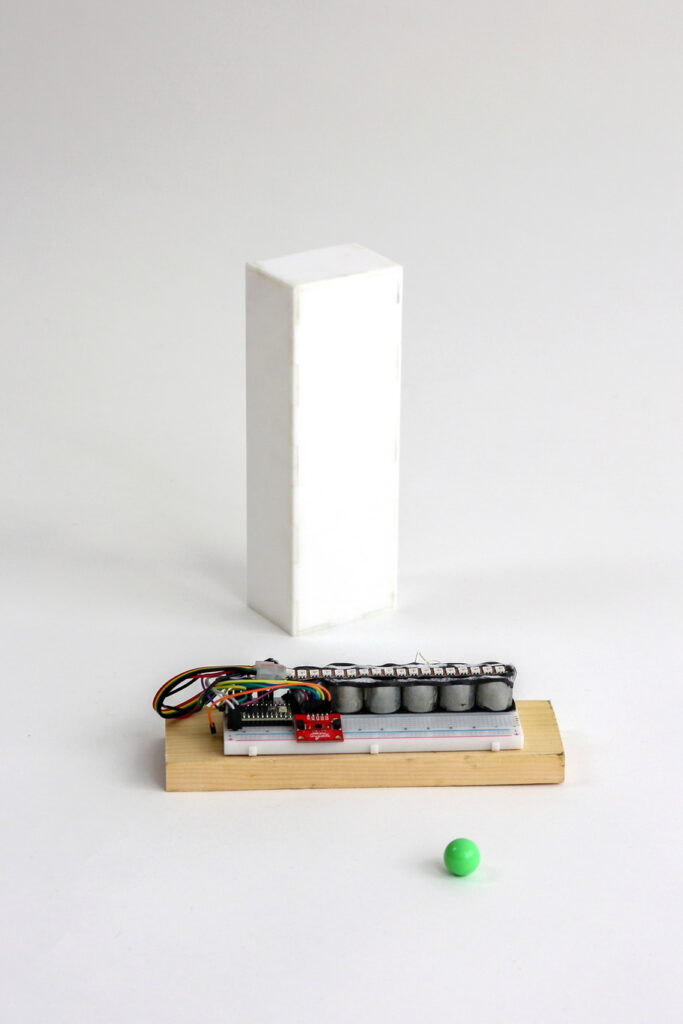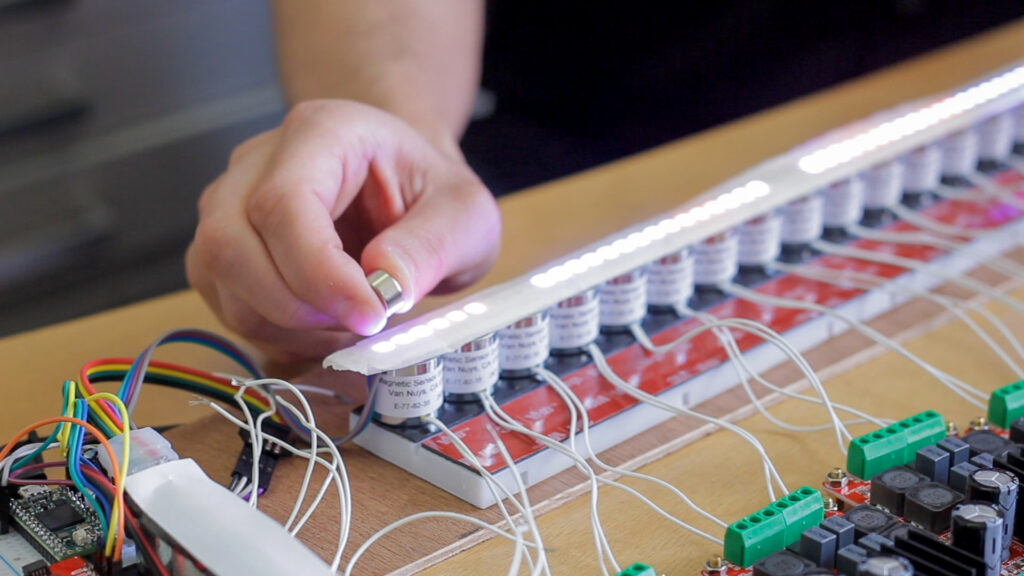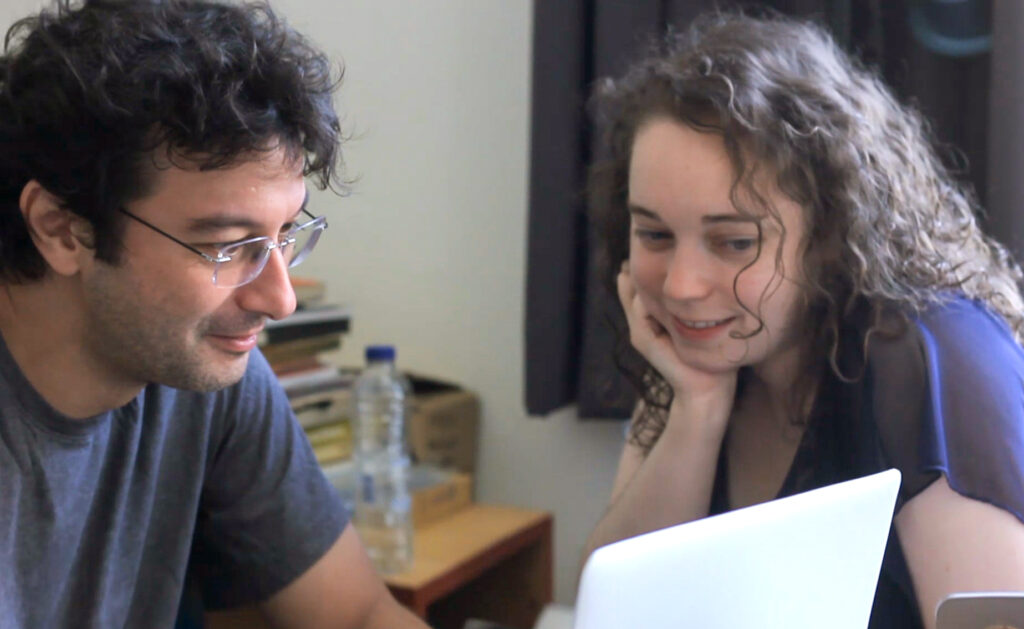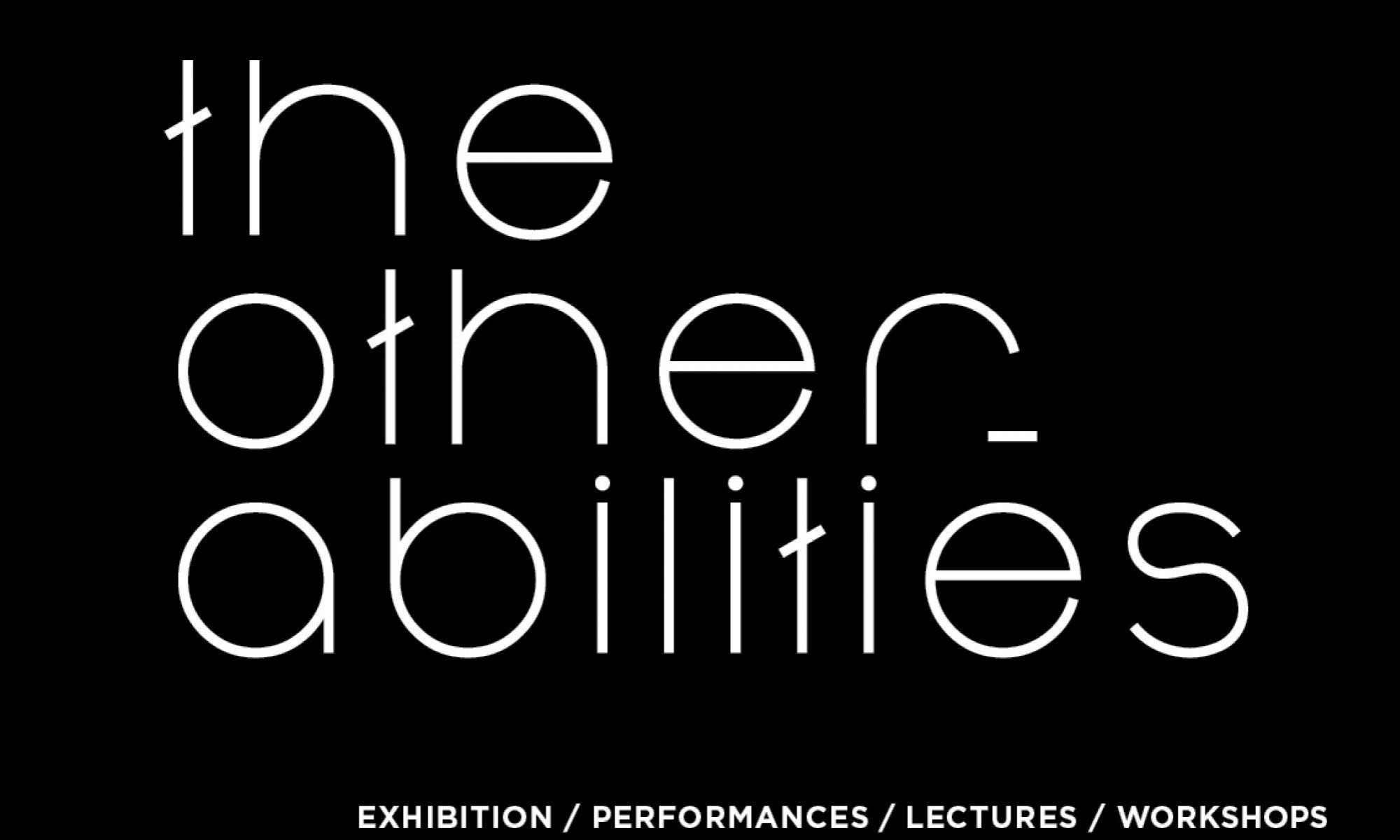
DIMENSIONS
7,5 x 23,5 x 5,5 cm
MATERIALS
Electromagnets, stereo-speaker setting, magnet(s), plastic cup,
Woojer transducers, wooden frame, elastic bands, joystick or drawing pad, laptop running Linux OS, electronics.

HOW IS THE PROTOTYPE MADE?
The Tactilloscope prototype appears as a small acrylic box. Hidden inside are six thumb-sized electromagnets placed to form a line. The electromagnets are powered and driven by several audio amplifiers connected to a multichannel audio interface. Each stereo amp feeds into two electromagnets, one for the right and another for the left channel.

Under the thin box lid and placed right on top of the line of electromagnets is a long LED strip. When the LEDs are off, the box seems like an ordinary box. When the LEDs are on, they illuminate the box from the inside at a specific location. The lights are controlled by a microcontroller that receives audio data from the interactive software.
HOW IS THE PROTOTYPE USED?

Tactilloscope is a platform for hearing-disabled people to learn about electronic sound generation through electromagnet-based tactile feedback at their fingertips. Multiple electromagnets are used to distribute the elements of electronically generated sound, such as amplitude, frequency, envelope, and harmonics.
Existing audio analysis tools focus on visual representation, such as oscilloscopes and spectroscopes. Tactilloscope employs tactilification, turning sound information into tactile sensation, to provide a visceral and intuitive understanding of electronic sound generation for the deaf/Deaf and hard-of-hearing.
The first phase of the Tactilloscope project focuses on the tactilification of spatial sound. Electromagnets are organized in an array in one direction in parallel to a stereo-speaker setting so that listeners with a hearing disability can understand where the sound is horizontally coming from using their fingertips.
The instrument is highly exploratory, calls for various interactions, and can be used in various modes to best fit the artwork being translated. Possible modes consist of decomposing audio spatially into the linear vibrating actuators. Another possible mode decomposes audio inputs in terms of frequencies or simply in terms of the audio channel. More complex modes can decompose the sounds in terms of auditory features. For instance, one channel can contain only the transient of the sound, another may only contain texture, and another may reflect volume. Another mode option, more dynamic, decomposes the sound in time and allows the signal to travel along the line of electromagnets.
In terms of interaction, tactile vibrations can only be felt with the intermediary of a magnet. This allows for various form factors. Holding a small magnet above the line transmits the vibrations to the fingertips. Placing two small magnets on both sides of the bottom of a paper or plastic cup and grabbing the cup above the line transmit the vibrations through the entire palm. This also transforms the cup into a small resonator and can allow the sound to be transmitted to the ear if it is placed right above the cup. A ring or finger cap containing a magnet focuses the vibrations on a single point on the finger.
